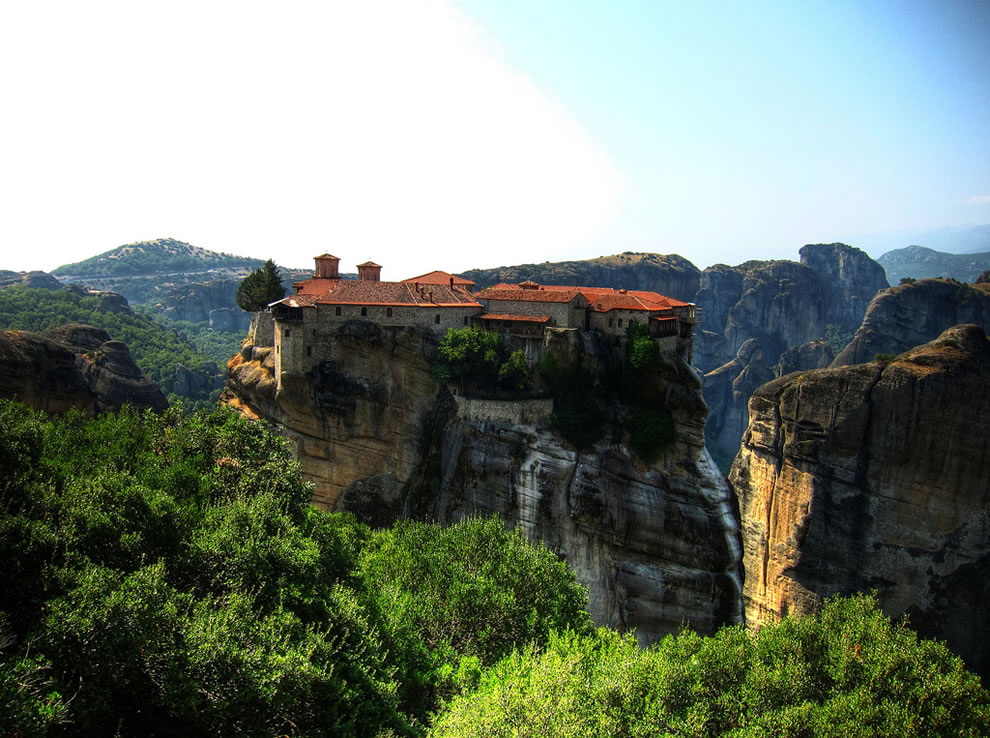Manuel II Aristenos
Few figures in imperial history have been as controversial as the last of the Aristenoi, Manuel II. It was not for anything during his short reign, however, but for his death and alleged apotheosis that controversies fly.
The sixth basileus of the Laparan Empire was a sickly child, plagued by health issues since his premature birth. Frail in build and constantly wracked with pain, the young Manuel was unfit for the military education his father, Loukas II Aristenos, has prescribed for his heir. The prince, instead, was drawn to a life in service to the gods, appointed as High Priest of Lapara at age 18. His devotion to the, almost unknown at that time, gods Amphitrion, Thalassa, and Autourgos, began to lay the foundation for Triumthelitism, which would become the empire’s dominant faith. Crowned as basileus in 129 AFE but died within twelve months, succumbing to his long-term illnesses. It is claimed by the Cult of the Divine Manuel, that upon his death, the young Emperor left behind his weak body and ascended to divinity.
Divine Domains
Through his illnesses, death, and ascension, the Divine Manuel is associated with health, disease, life and death. Clerics in his service often belong to the Life or Grave domains.
Tenets of Faith
Manuelists hold that the basileus was gifted divinity by the Holy Wills, in reward for his tireless service to the gods. Furthermore, they believe that Manuel’s life was an example that all should follow in their own paths through life, and that Manuel was the first of humans to rise to his divine end, but that he would not be the last.
It is for this reason that the Cult of the Divine Manuel is typically even more devoted to the Holy Wills than mainline triumthelites. The promise of a life on the other side of the Beyond for faithful service to the Holy Wills has led to the cult's spread throughout the eastern edges of the empire.
Holidays
Mental characteristics
Personal history
Born in 108AFE the sickly only child of Loukas II Aristenos, Manuel was attended to by an endless train of physicians and priests, each of whom claimed they alone could save the child from the maladies that plagued him since birth. Wracked with pain, the young prince shunned the heavy exercise and constant training of the martial education his father had set out for him, preferring the public spectacle and ritual of the temples to which he accompanied his mother and where he witnessed countless sacrifices made for his health. After each sacrifice made, the pain he felt would subside for some time, impressing the young Manuel with the power wielded by the gods.
Recognizing his son’s dedication to the matters of the divines, his father consented to his education at the hands of the septuagenarian high priest. It was he who recommended to the basileus and senate that the young prince be named his successor when he passed from the world. And so, aged only sixteen years, the newly-appointed Manuel Aristenos slaughtered his first bull for the soul of his mentor, lest it be consumed on its journey to the Beyond. He oversaw a series of building projects, primarily focused on the renovation and construction of shrines and temples dedicated to the, then unknown, Holy Wills, with whom the high priest spoke freely and openly, if rumors are to be believed.
His maladies grew worse over time, and Manuel was confined to his bedchamber the final two years of his life. When his father died, the senate voted Manuel to succeed him, offering one last act of loyalty to the Aristenos dynasty, certain In the fact that the son would soon follow the father. The infirm basileus’ maternal uncle, Dimitrios Zenōn, was appointed regent and ruled in Manuel’s stead, constructing a grand tomb for the last of the Aristenoi. It was during excavation of the area for the tomb that the inert bloodstone Aulenor was discovered and brought back to @Lapara. As his last breath left Manuel’s lips, Aulenor burst to life. The Cult of the Divine Manuel claim that, at this moment, Manuel II Aristenos achieved divinity.
Accomplishments & Achievements
Failures & Embarrassments
The young basileus, throughout his entire life, remained unmarried, although this was not of his own volition. Physically stunted, unattractive and prone to frequent bursts of anger on account of his pain, Manuel was such a disagreeable companion that there were none who agreed to his proposals, despite the wealth and power that they brought with them.
Contemporary accounts mention the open secret that, in his youth, Manuel frequented prostitutes in the lower slums of the city, and that a parade of youths claimed to be his children. The only case of questionable parentage that resulted in a posthumous acknowledgement by the senate was in the case of the young Michael Argyros. Michael, initially thought to be the child of Manuel’s longtime friend, Isaac Argyros, was granted the surname Aristenos, but inherited nothing as there was little evidence that he was Manuel’s child, the mother’s testimony notwithstanding.

The Roof of the World
The remains of Manuel II Aristenos were housed in the Tomb of Manuel II for more than four centuries. Construction of the hilltop monastery began in 163AFE, to provide a sanctuary for the faith's relics during the persecutions of Manuelism under the basileus Nikolaos Zenōn.
The Manuelist Heresy
The Cult of the Divine Manuel, formally declared a heresy by the Triumthelite church for its open worship of the deceased basileus, whom they claim ascended to godhood upon leaving his mortal body behind.
The Origins of Triumthelitism
The Holy Wills, Amphitrion, Thalassa, and Autourgos, were relatively unknown in Lapara prior to the reign of Manuel II. Through the efforts of him and his successor, Dimitrios Zenōn, they developed into the dominant faith in the empire in a few short decades.




Comments